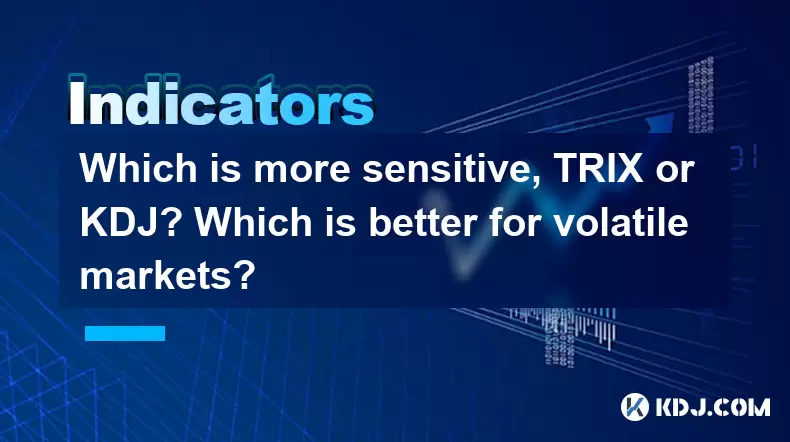-
 Bitcoin
Bitcoin $117900
-2.85% -
 Ethereum
Ethereum $4559
-2.84% -
 XRP
XRP $3.068
-5.67% -
 Tether USDt
Tether USDt $1.000
0.02% -
 BNB
BNB $836.7
-0.81% -
 Solana
Solana $193.2
-2.38% -
 USDC
USDC $0.9998
0.00% -
 TRON
TRON $0.3591
-0.32% -
 Dogecoin
Dogecoin $0.2238
-7.20% -
 Cardano
Cardano $0.9090
4.71% -
 Chainlink
Chainlink $22.55
-4.36% -
 Hyperliquid
Hyperliquid $44.78
-2.41% -
 Sui
Sui $3.771
-4.47% -
 Stellar
Stellar $0.4199
-6.18% -
 Bitcoin Cash
Bitcoin Cash $587.8
-5.02% -
 Ethena USDe
Ethena USDe $1.001
-0.01% -
 Hedera
Hedera $0.2493
-5.06% -
 Avalanche
Avalanche $23.66
-5.54% -
 Litecoin
Litecoin $121.0
-6.80% -
 Toncoin
Toncoin $3.383
-2.39% -
 UNUS SED LEO
UNUS SED LEO $9.287
0.47% -
 Shiba Inu
Shiba Inu $0.00001286
-6.48% -
 Uniswap
Uniswap $10.94
-9.06% -
 Polkadot
Polkadot $3.979
-5.53% -
 OKB
OKB $96.24
-3.88% -
 Dai
Dai $0.9997
0.00% -
 Bitget Token
Bitget Token $4.570
-4.16% -
 Cronos
Cronos $0.1510
-8.87% -
 Ethena
Ethena $0.7251
-6.96% -
 Aave
Aave $310.8
-4.73%
Which is more sensitive, TRIX or KDJ? Which is better for volatile markets?
TRIX, with its slower response, suits conservative traders in volatile markets, while KDJ's high sensitivity aids those seeking short-term gains despite potential false signals.
May 22, 2025 at 01:21 pm

In the world of cryptocurrency trading, technical indicators play a crucial role in helping traders make informed decisions. Two popular indicators used by many traders are TRIX and KDJ. Both have their unique characteristics and are used to identify different market conditions. In this article, we will explore the sensitivity of TRIX and KDJ, and determine which indicator is better suited for volatile markets.
Understanding TRIX
TRIX, or the Triple Exponential Average, is a momentum indicator that measures the rate of change of a triple-smoothed exponential moving average. It is designed to filter out market noise and provide a clearer picture of the underlying trend. The TRIX indicator is typically displayed as a single line that oscillates around a zero line, with positive values indicating bullish momentum and negative values indicating bearish momentum.
The TRIX indicator is known for its slower response to price changes due to the triple smoothing process. This means that it is less sensitive to short-term price fluctuations and is better suited for identifying longer-term trends. Traders often use TRIX to confirm the direction of the trend and to spot potential trend reversals.
Understanding KDJ
KDJ, or the Stochastic Oscillator, is another popular momentum indicator that measures the relative position of the closing price within a given period. The KDJ indicator consists of three lines: the %K line, the %D line, and the J line. The %K and %D lines are used to generate buy and sell signals, while the J line is used to confirm the strength of the signal.
Unlike TRIX, the KDJ indicator is known for its higher sensitivity to price changes. It is designed to react quickly to short-term price movements, making it a popular choice among traders who are looking to capitalize on short-term market fluctuations. The KDJ indicator is often used to identify overbought and oversold conditions, as well as potential trend reversals.
Comparing Sensitivity: TRIX vs. KDJ
When it comes to sensitivity, the KDJ indicator is generally considered to be more sensitive than the TRIX indicator. The KDJ's quick response to price changes allows traders to identify short-term trading opportunities, while the TRIX's slower response is better suited for identifying longer-term trends.
The sensitivity of an indicator can be both a blessing and a curse. A more sensitive indicator like KDJ can provide early signals of potential trend reversals, but it can also generate more false signals due to its susceptibility to market noise. On the other hand, a less sensitive indicator like TRIX may provide more reliable signals, but it may also be slower to react to changing market conditions.
TRIX and KDJ in Volatile Markets
Volatile markets are characterized by rapid price fluctuations and increased uncertainty. In such conditions, traders need indicators that can help them navigate the market and make informed trading decisions. Both TRIX and KDJ can be used in volatile markets, but their effectiveness depends on the trader's trading style and risk tolerance.
For traders who prefer a more conservative approach, the TRIX indicator may be a better choice. Its slower response to price changes can help filter out market noise and provide more reliable signals. This can be particularly useful in volatile markets, where false signals can lead to significant losses.
On the other hand, traders who are comfortable with higher risk and faster trading may find the KDJ indicator more suitable. Its higher sensitivity to price changes can help traders capitalize on short-term market fluctuations and potentially generate higher returns. However, traders must be prepared to act quickly and manage their risk effectively, as the KDJ indicator can generate more false signals in volatile markets.
Using TRIX and KDJ Together
While TRIX and KDJ have different sensitivities and are suited for different trading styles, they can also be used together to provide a more comprehensive view of the market. By combining the strengths of both indicators, traders can gain a better understanding of the market and make more informed trading decisions.
Here's how traders can use TRIX and KDJ together:
- Confirming Signals: Traders can use the TRIX indicator to confirm the signals generated by the KDJ indicator. If the KDJ indicator generates a buy signal and the TRIX indicator is also showing bullish momentum, it can provide additional confirmation of the potential uptrend.
- Identifying Trend Reversals: The KDJ indicator can be used to identify potential trend reversals, while the TRIX indicator can be used to confirm the strength of the reversal. If the KDJ indicator generates a sell signal and the TRIX indicator is also showing bearish momentum, it can provide additional confirmation of the potential downtrend.
- Filtering Out Noise: Traders can use the TRIX indicator to filter out market noise and focus on the longer-term trend. If the KDJ indicator generates a signal that contradicts the direction of the TRIX indicator, it may be a false signal caused by short-term market fluctuations.
Frequently Asked Questions
Q: Can I use TRIX and KDJ for long-term investing?
A: While TRIX and KDJ are primarily used for short-term trading, they can also be used to identify longer-term trends. The TRIX indicator, in particular, is well-suited for identifying longer-term trends due to its slower response to price changes. However, long-term investors should also consider other factors, such as fundamental analysis and market sentiment, when making investment decisions.
Q: How often should I adjust the settings of TRIX and KDJ?
A: The settings of TRIX and KDJ can be adjusted based on the trader's trading style and the market conditions. For short-term trading, traders may want to use shorter periods for the KDJ indicator to capture more frequent trading opportunities. For longer-term trading, traders may want to use longer periods for the TRIX indicator to focus on the underlying trend. It's important to test different settings and find the ones that work best for your trading strategy.
Q: Can TRIX and KDJ be used for all cryptocurrencies?
A: TRIX and KDJ can be used for most cryptocurrencies, as they are based on price data and can be applied to any tradable asset. However, the effectiveness of these indicators may vary depending on the liquidity and volatility of the cryptocurrency. It's important to test these indicators on different cryptocurrencies and adjust your trading strategy accordingly.
Q: Are there any other indicators that can be used in conjunction with TRIX and KDJ?
A: Yes, there are many other technical indicators that can be used in conjunction with TRIX and KDJ to provide a more comprehensive view of the market. Some popular indicators include the Relative Strength Index (RSI), the Moving Average Convergence Divergence (MACD), and the Bollinger Bands. By combining multiple indicators, traders can gain a better understanding of the market and make more informed trading decisions.
Disclaimer:info@kdj.com
The information provided is not trading advice. kdj.com does not assume any responsibility for any investments made based on the information provided in this article. Cryptocurrencies are highly volatile and it is highly recommended that you invest with caution after thorough research!
If you believe that the content used on this website infringes your copyright, please contact us immediately (info@kdj.com) and we will delete it promptly.
- Kazakhstan's Crypto Leap: Bitcoin ETF and Central Asia's Digital Finance Future
- 2025-08-13 12:45:19
- BlockDAG Presale Blazes Past $371M: Fundraising Frenzy Fuels Crypto Sensation
- 2025-08-13 13:05:21
- Meme Coins: Chasing the 2025 Surge – Which Will Moonshot?
- 2025-08-13 10:25:23
- Bitcoin's Wild Ride: Rally, Pullback, and What's Next
- 2025-08-13 10:25:23
- Bitcoin, Bitmax, and Institutional Demand: A New Era of Crypto Investment
- 2025-08-13 10:45:12
- Solana, ROAM, and Airdrops: What's the Buzz in 2025?
- 2025-08-13 11:35:13
Related knowledge

What does it mean when the +DI and -DI cross frequently in the DMI indicator but the ADX is flattening?
Aug 11,2025 at 03:15am
Understanding the DMI Indicator ComponentsThe Directional Movement Index (DMI) is a technical analysis tool composed of three lines: the +DI (Positive...

What does the sudden appearance of a "dark cloud cover" candlestick pattern during an uptrend indicate?
Aug 13,2025 at 11:35am
Understanding the 'Dark Cloud Cover' Candlestick PatternThe dark cloud cover is a bearish reversal pattern in technical analysis that typically appear...

What does it mean when the moving average, MACD, and RSI all send buy signals simultaneously?
Aug 11,2025 at 01:42pm
Understanding the Convergence of Technical IndicatorsWhen the moving average, MACD, and RSI all generate buy signals at the same time, traders interpr...

What does it mean when both the KDJ indicator and the RSI show overbought signals simultaneously?
Aug 13,2025 at 11:35am
Understanding the KDJ Indicator in Cryptocurrency TradingThe KDJ indicator is a momentum oscillator derived from the Stochastic Oscillator, widely use...

What does it mean when the price is trading above the SAR indicator but the red dots are densely packed?
Aug 09,2025 at 11:49pm
Understanding the SAR Indicator and Its Visual SignalsThe SAR (Parabolic Stop and Reverse) indicator is a technical analysis tool used primarily to de...

What does it mean when the candlestick chart forms a "Morning Star" but trading volume is sluggish?
Aug 12,2025 at 06:28pm
Understanding the Morning Star Candlestick PatternThe Morning Star is a three-candle bullish reversal pattern commonly observed in cryptocurrency pric...

What does it mean when the +DI and -DI cross frequently in the DMI indicator but the ADX is flattening?
Aug 11,2025 at 03:15am
Understanding the DMI Indicator ComponentsThe Directional Movement Index (DMI) is a technical analysis tool composed of three lines: the +DI (Positive...

What does the sudden appearance of a "dark cloud cover" candlestick pattern during an uptrend indicate?
Aug 13,2025 at 11:35am
Understanding the 'Dark Cloud Cover' Candlestick PatternThe dark cloud cover is a bearish reversal pattern in technical analysis that typically appear...

What does it mean when the moving average, MACD, and RSI all send buy signals simultaneously?
Aug 11,2025 at 01:42pm
Understanding the Convergence of Technical IndicatorsWhen the moving average, MACD, and RSI all generate buy signals at the same time, traders interpr...

What does it mean when both the KDJ indicator and the RSI show overbought signals simultaneously?
Aug 13,2025 at 11:35am
Understanding the KDJ Indicator in Cryptocurrency TradingThe KDJ indicator is a momentum oscillator derived from the Stochastic Oscillator, widely use...

What does it mean when the price is trading above the SAR indicator but the red dots are densely packed?
Aug 09,2025 at 11:49pm
Understanding the SAR Indicator and Its Visual SignalsThe SAR (Parabolic Stop and Reverse) indicator is a technical analysis tool used primarily to de...

What does it mean when the candlestick chart forms a "Morning Star" but trading volume is sluggish?
Aug 12,2025 at 06:28pm
Understanding the Morning Star Candlestick PatternThe Morning Star is a three-candle bullish reversal pattern commonly observed in cryptocurrency pric...
See all articles

























































































